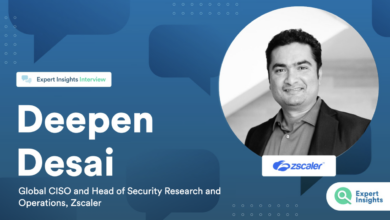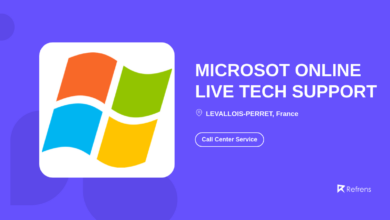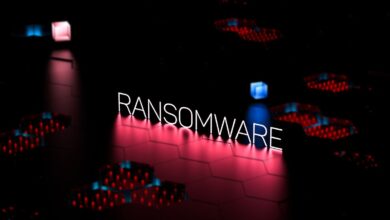
Exploring Common Cyber Attacks Understanding the Threat
Exploring the most common types of cyber attacks understanding the threat landscape – Exploring the most common types of cyber attacks and understanding the threat landscape is crucial in today’s digital world. We’re constantly bombarded with news about data breaches, ransomware attacks, and phishing scams, making it feel like a digital Wild West out there. But by understanding the common attack methods – from malware and phishing to denial-of-service attacks and data breaches – we can better protect ourselves and our information.
This post dives into the most prevalent threats, explaining how they work and what you can do to stay safe.
This isn’t about scaring you; it’s about empowering you. Knowing the enemy is half the battle, and once you understand the tactics used by cybercriminals, you can start building a stronger defense. We’ll cover everything from simple preventative measures to more advanced security strategies, so whether you’re a tech novice or a seasoned pro, there’s something here for you.
Introduction to Cyber Threats
The cyber threat landscape is a constantly evolving battlefield, characterized by increasingly sophisticated attacks and a growing number of vulnerable targets. The sheer interconnectedness of our digital world, coupled with the rapid advancement of technology, creates a fertile ground for malicious actors to exploit weaknesses and wreak havoc. Understanding the nature of these threats is crucial for individuals and organizations alike to effectively protect themselves.The methods employed by cybercriminals are diverse and constantly adapting.
Attackers are continuously finding new ways to bypass security measures, necessitating a proactive and dynamic approach to cybersecurity. This necessitates a continuous learning process to stay ahead of the ever-shifting threat landscape.
Common Attack Vectors
Cyberattacks can manifest in numerous ways, utilizing various entry points into a system or network. Understanding these attack vectors is fundamental to building robust defenses. These vectors range from simple phishing emails to complex, multi-stage attacks leveraging vulnerabilities in software and hardware.
Prevalence of Cyberattack Types
Precise statistics on the prevalence of different cyberattack types vary depending on the source and methodology used. However, consistent trends emerge across various reports. Phishing remains a dominant attack vector, consistently ranking among the most prevalent methods used by cybercriminals. Ransomware attacks, targeting both individuals and organizations, have seen a significant increase in recent years, often resulting in substantial financial losses and operational disruptions.
Data breaches, often facilitated by exploiting vulnerabilities in software or through insider threats, continue to be a major concern, leading to the exposure of sensitive personal and corporate information. Denial-of-service (DoS) attacks, aimed at disrupting online services by overwhelming them with traffic, also remain a significant threat, particularly targeting websites and online infrastructure. According to a recent report by Cybersecurity Ventures, global cybercrime costs are projected to reach $10.5 trillion annually by 2025.
This staggering figure highlights the escalating financial impact of cyberattacks and underscores the importance of robust cybersecurity measures. The same report estimates that a ransomware attack occurs every 11 seconds. This illustrates the alarming frequency of these attacks and the urgent need for proactive defenses.
Malware Attacks
Malware, short for malicious software, represents a significant threat in the modern cyber landscape. Understanding the different types of malware and their mechanisms is crucial for effective cybersecurity. This section delves into the common types of malware, their methods of infection, and their impact on systems and individuals.
Malware Types and Mechanisms
Several distinct categories of malware exist, each employing unique techniques to infiltrate and compromise systems. Viruses, worms, Trojans, and ransomware are among the most prevalent and damaging. These differ significantly in their methods of propagation and their ultimate objectives.
Viruses, Exploring the most common types of cyber attacks understanding the threat landscape
Viruses are self-replicating programs that attach themselves to other files or programs. They require a host program to execute and spread. Infection typically occurs through the execution of infected files, often downloaded from untrusted sources or received via email attachments. Once active, a virus can perform a variety of malicious actions, from corrupting data to slowing down system performance.
The notorious “Melissa” virus, which spread via email in 1999, is a prime example of the disruptive potential of viruses.
Worms
Unlike viruses, worms are self-contained programs that can replicate and spread independently without requiring a host program. They exploit vulnerabilities in network systems to propagate, often spreading rapidly across networks. The “Morris Worm” of 1988, which caused significant disruption to the early internet, serves as a stark reminder of the destructive capabilities of worms. Their primary method of infection is exploiting network vulnerabilities and propagating themselves through network traffic.
Trojans
Trojan horses, or simply Trojans, disguise themselves as legitimate software. Users are often tricked into downloading and installing them, believing they are acquiring a useful program. Once installed, a Trojan can perform various malicious actions, such as stealing data, installing other malware, or providing remote access to attackers. The impact of a Trojan can range from minor inconvenience to complete system compromise, depending on the specific payload.
Ransomware
Ransomware is a type of malware that encrypts a victim’s files, rendering them inaccessible. Attackers then demand a ransom payment in exchange for the decryption key. The impact of ransomware can be devastating, leading to significant financial losses, data loss, and operational disruptions. The WannaCry ransomware attack of 2017, which affected thousands of organizations worldwide, highlights the severe consequences of this type of malware.
Malware Characteristics Comparison
| Malware Type | Method of Infection | Payload | Impact |
|---|---|---|---|
| Virus | Attachment to host file; execution of infected file | Data corruption, system slowdown, data theft | Data loss, system instability, potential for further infection |
| Worm | Network exploitation; vulnerability scanning | Network congestion, data theft, system compromise | Network disruption, data loss, system instability |
| Trojan | Deceptive software installation | Data theft, backdoor access, installation of further malware | Data breach, system compromise, potential for further attacks |
| Ransomware | Phishing emails, exploit kits, malicious downloads | File encryption; ransom demand | Data loss, financial loss, operational disruption |
Phishing and Social Engineering
Phishing and social engineering attacks exploit human psychology to trick individuals into revealing sensitive information or performing actions that compromise their security. These attacks are incredibly effective because they leverage trust and exploit vulnerabilities in human behavior, often proving more successful than sophisticated technical exploits. Understanding the techniques used and developing strong defenses is crucial in today’s digital landscape.Phishing attacks rely on deception to gain access to personal data.
They often mimic legitimate organizations or individuals to build trust, then leverage that trust to extract valuable information. This can range from financial details to login credentials, impacting both individuals and businesses. The consequences can be severe, leading to financial loss, identity theft, and reputational damage.
Phishing Techniques
Phishing attacks employ a variety of techniques to lure victims. Email remains a primary vector, but SMS messages (smishing) and social media platforms are increasingly used. Attackers craft convincing messages that appear to originate from trusted sources, often including logos, branding, and even seemingly legitimate links. For instance, a phishing email might impersonate a bank, requesting users to update their account details through a fraudulent website.
Similarly, a smishing attack might claim a prize or a package delivery requires immediate action, leading the recipient to a malicious link. Social media phishing leverages the platform’s social dynamics, using fake profiles or compromised accounts to spread malicious links or engage in direct messaging scams.
Indicators of Phishing Attempts
Recognizing the signs of a phishing attempt is critical in preventing successful attacks. Several red flags should raise suspicion. Suspicious email addresses or URLs that don’t match the organization they claim to represent are a common indicator. Grammatical errors, poor spelling, and unprofessional tone in emails or messages are also strong warning signs. Urgent requests for immediate action, often involving threats or promises of rewards, are frequently used to pressure victims into acting quickly without thinking.
Unexpected or unsolicited emails or messages from unknown senders should always be treated with caution. Finally, hovering over links before clicking can reveal the actual destination URL, which may differ from the displayed text. If the URL looks suspicious or doesn’t match the expected organization, avoid clicking it.
Best Practices for Avoiding Phishing Scams
Developing robust habits is key to protecting yourself from phishing attacks.
- Verify the sender: Always double-check the sender’s email address or phone number before responding or clicking any links.
- Examine links carefully: Hover over links to check the actual URL before clicking. Look for misspellings or unusual characters.
- Beware of urgency: Legitimate organizations rarely demand immediate action. Take your time and verify information before responding.
- Check for grammatical errors and unprofessional tone: Poorly written messages are often a sign of a phishing attempt.
- Never share personal information via email or text message unless you initiated the contact and are confident in the recipient’s identity.
- Enable two-factor authentication (2FA) wherever possible to add an extra layer of security to your accounts.
- Regularly update your software and operating system to patch security vulnerabilities.
- Be cautious on social media: Don’t click links from unknown sources or accept friend requests from strangers.
- Report suspicious emails and messages: Many organizations have mechanisms for reporting phishing attempts.
Denial-of-Service (DoS) and Distributed Denial-of-Service (DDoS) Attacks
Denial-of-Service (DoS) and Distributed Denial-of-Service (DDoS) attacks are a significant threat in the modern cyber landscape, aiming to disrupt online services by overwhelming their resources. Understanding the mechanics and impact of these attacks is crucial for effective cybersecurity strategies. Both DoS and DDoS attacks flood a target system with traffic, rendering it unavailable to legitimate users. However, they differ significantly in their scale and complexity.DoS and DDoS attacks employ various methods to achieve their goal of disrupting service.
These methods often exploit vulnerabilities in network protocols or applications. The sheer volume of traffic generated can overwhelm even robust systems, causing outages and significant financial losses.
Methods Used to Launch DoS and DDoS Attacks
DoS attacks typically originate from a single source, such as a compromised computer or a botnet controlled by a single attacker. Common methods include sending a flood of malformed packets (e.g., using the SYN flood technique, where a series of SYN requests are sent without completing the three-way handshake), or exploiting vulnerabilities in specific applications to consume server resources.
DDoS attacks, on the other hand, leverage multiple compromised systems (a botnet) to launch a coordinated attack against a target. This distributed nature makes DDoS attacks far more powerful and difficult to mitigate. Common DDoS attack vectors include volumetric attacks (flooding the target with massive amounts of traffic), protocol attacks (exploiting vulnerabilities in network protocols like UDP or ICMP), and application layer attacks (targeting specific applications to overwhelm their resources).
The use of botnets, often comprised of IoT devices, allows attackers to generate a massive amount of traffic from numerous sources, making it difficult to pinpoint and block the attack’s origin.
Impact of DoS and DDoS Attacks on Different Systems
The impact of a DoS or DDoS attack can vary greatly depending on the target system, the intensity and duration of the attack, and the system’s resilience. A small website might experience complete unavailability during a relatively small-scale attack, while a large, well-protected online service might only experience degraded performance. However, even a temporary outage can have severe consequences, including financial losses due to lost sales, reputational damage, and legal repercussions.
Critical infrastructure systems, such as power grids or financial institutions, are particularly vulnerable to the cascading effects of a successful attack, potentially leading to widespread disruption and significant damage. The impact extends beyond just website downtime; it can affect customer trust, operational efficiency, and overall business continuity. For example, a DDoS attack targeting a major e-commerce platform during peak shopping season could result in millions of dollars in lost revenue.
Comparison of DoS and DDoS Attacks
| Feature | DoS Attack | DDoS Attack |
|---|---|---|
| Origin | Single source | Multiple sources (botnet) |
| Scale | Relatively small | Very large |
| Complexity | Lower | Higher |
| Mitigation | Easier to mitigate | More difficult to mitigate |
| Impact | Can cause service disruption | Can cause significant service disruption and widespread damage |
Network Attacks

Network attacks target the infrastructure that connects devices and systems, aiming to disrupt communication, steal data, or gain unauthorized access. These attacks exploit vulnerabilities in network protocols and configurations, often leveraging sophisticated techniques to remain undetected. Understanding the methods and impacts of common network attacks is crucial for building robust network security.
Man-in-the-Middle Attacks
Man-in-the-middle (MitM) attacks involve an attacker secretly relaying and possibly altering the communication between two parties who believe they are directly communicating with each other. This allows the attacker to eavesdrop on the conversation, steal sensitive information like passwords and credit card details, or even manipulate the communication to their advantage. For instance, an attacker might intercept an HTTPS connection, decrypting the traffic to access login credentials, then re-encrypting it to send it on to the legitimate server.
The victim and the server remain unaware of the attacker’s presence.
ARP Poisoning
ARP poisoning is a type of MitM attack that exploits the Address Resolution Protocol (ARP). ARP maps IP addresses to MAC addresses on a local network. An attacker can flood the network with false ARP responses, associating their MAC address with the IP address of a legitimate device (like a router or gateway). This tricks other devices on the network into sending their traffic to the attacker instead of the intended recipient, allowing the attacker to intercept and manipulate network traffic.
Imagine a scenario where an attacker poisons the ARP cache of a user’s machine, making the user’s traffic route through the attacker’s machine before reaching the intended server. The attacker can then inspect, modify, or even block the traffic.
Impact of Network Attacks
The impact of network attacks can be significant, ranging from minor inconveniences to catastrophic failures. Data breaches, financial losses, reputational damage, and operational disruptions are all potential consequences. Successful attacks can lead to the theft of intellectual property, customer data, or sensitive business information. Moreover, network attacks can cripple business operations by disrupting network services, causing downtime, and hindering productivity.
In some cases, they can even lead to legal ramifications and hefty fines.
Network Security Measures
Effective network security measures are crucial to mitigate the risk of network attacks. A multi-layered approach is recommended to ensure comprehensive protection.
- Firewall Implementation: Firewalls act as gatekeepers, filtering incoming and outgoing network traffic based on predefined rules. They help block malicious traffic and prevent unauthorized access to the network.
- Intrusion Detection/Prevention Systems (IDS/IPS): These systems monitor network traffic for suspicious activity, alerting administrators to potential threats and automatically blocking malicious traffic. They can detect and prevent various attacks, including MitM and ARP poisoning.
- Network Segmentation: Dividing the network into smaller, isolated segments limits the impact of a successful attack. If one segment is compromised, the attacker’s access is restricted to that segment only.
- Regular Security Audits and Penetration Testing: Regular security assessments help identify vulnerabilities and weaknesses in the network infrastructure, allowing for timely remediation.
- Strong Authentication and Access Control: Implementing strong passwords, multi-factor authentication, and role-based access control limits unauthorized access to sensitive network resources.
- Encryption: Encrypting network traffic protects data from eavesdropping and unauthorized access, even if an attacker manages to intercept the communication. Using VPNs and HTTPS are examples of employing encryption.
- Employee Training: Educating employees about network security threats and best practices helps reduce the risk of human error, a common factor in many successful attacks.
Data Breaches and Insider Threats
Data breaches and insider threats represent significant challenges in today’s digital landscape. The interconnected nature of systems and the increasing reliance on digital information make organizations vulnerable to both external attacks and internal compromises. Understanding the causes and mitigating factors for these threats is crucial for maintaining data security and business continuity.Data breaches, the unauthorized access and disclosure of sensitive information, can have devastating consequences, ranging from financial losses and reputational damage to legal penalties and loss of customer trust.
Insider threats, on the other hand, involve malicious or negligent actions by individuals within an organization who have legitimate access to sensitive data. These threats can be equally, if not more, damaging than external attacks, as insiders possess privileged access and often understand internal security procedures.
Causes of Data Breaches
Several factors contribute to data breaches. These include vulnerabilities in software and systems, weak or stolen credentials, phishing and social engineering attacks, malware infections, and physical security breaches. Often, a combination of these factors creates opportunities for attackers to exploit weaknesses. For example, a phishing email might trick an employee into revealing their password, granting an attacker access to a system with vulnerabilities that then allows for a data breach.
Another example could be a physical theft of a laptop containing sensitive client data. The lack of robust security measures, such as multi-factor authentication and regular security audits, further exacerbates the risk.
Risks Associated with Insider Threats
Insider threats pose unique challenges due to the inherent trust placed in employees and contractors. Malicious insiders may steal data for personal gain, sabotage systems, or leak confidential information to competitors. Negligent insiders, on the other hand, might inadvertently expose data through careless actions like leaving laptops unattended or failing to follow security protocols. The damage caused by insider threats can be particularly devastating because these individuals possess legitimate access and often understand the organization’s security infrastructure.
The 2017 Equifax data breach, for instance, was caused by a single employee who failed to patch a known vulnerability, leading to the exposure of sensitive personal information of millions of customers.
Preventing Data Breaches and Mitigating Insider Threats
Robust security measures are essential to prevent data breaches and mitigate insider threats. This includes implementing strong password policies, utilizing multi-factor authentication, regularly patching software and systems, conducting security awareness training for employees, and establishing robust access control mechanisms. Regular security audits and penetration testing can identify vulnerabilities before they are exploited. Data loss prevention (DLP) tools can monitor and prevent sensitive data from leaving the organization’s network.
Background checks and robust onboarding procedures can help identify potential risks associated with new hires. Furthermore, establishing clear security policies and procedures, coupled with consistent enforcement, is critical. Regular monitoring of employee activity and implementing strong access controls, including the principle of least privilege, can help detect and prevent malicious or negligent actions by insiders. Finally, a well-defined incident response plan is crucial for minimizing the impact of a data breach or insider threat.
Web Application Attacks
Web applications, the backbone of modern online interactions, are unfortunately prime targets for cyberattacks. Their vulnerabilities stem from the complex interplay of code, databases, and user input, creating opportunities for malicious actors to exploit weaknesses and gain unauthorized access or disrupt services. Understanding common attack vectors and implementing robust security measures are crucial for protecting both businesses and users.
Two particularly prevalent types of web application attacks are SQL injection and cross-site scripting (XSS). These attacks leverage vulnerabilities in how applications handle user-supplied data, potentially leading to data breaches, unauthorized access, and website defacement. Effective mitigation strategies involve secure coding practices and rigorous input validation.
SQL Injection
SQL injection attacks exploit vulnerabilities in how web applications handle database queries. Attackers inject malicious SQL code into input fields, manipulating database commands to retrieve sensitive information, modify data, or even gain complete control of the database. For example, an attacker might submit a username like ‘admin’ OR ‘1’=’1′ — in a login form. This bypasses authentication because the injected SQL statement (‘1’=’1’ is always true) forces the database to return true, granting access even with an incorrect password.
Exploiting this vulnerability involves crafting malicious SQL statements that are seamlessly integrated into user inputs. These crafted statements then override the intended database queries, allowing attackers to execute their own commands. The severity depends on the database permissions the application grants.
Preventing SQL injection requires parameterized queries or prepared statements. These techniques separate data from SQL commands, preventing malicious code from being interpreted as executable instructions. Input sanitization, carefully validating and escaping all user inputs before using them in database queries, is also essential. Using an ORM (Object-Relational Mapper) can significantly reduce the risk, as they often handle parameterization automatically.
Cross-Site Scripting (XSS)
Cross-site scripting (XSS) attacks occur when malicious scripts are injected into otherwise benign and trusted websites. These scripts are then executed in the victim’s browser, potentially stealing cookies, session tokens, or other sensitive information. There are several types of XSS attacks, including reflected, stored, and DOM-based attacks, each with its own characteristics and exploitation methods. A reflected XSS attack, for example, might involve an attacker crafting a malicious URL that, when clicked by a victim, injects a script into the website’s response.
Methods used to exploit XSS vulnerabilities often involve embedding malicious JavaScript code within seemingly harmless user inputs. This code can then be executed in the context of the vulnerable website, granting the attacker access to the victim’s session or sensitive data. For example, an attacker might inject a script into a comment field on a blog, which is then displayed to other users.
If the blog doesn’t properly sanitize the input, the script will execute in the browsers of other visitors.
Secure coding practices to prevent XSS attacks primarily focus on proper input validation and output encoding. All user-supplied data should be carefully validated and sanitized before being displayed on a webpage. Output encoding converts special characters into their HTML entities, preventing them from being interpreted as executable code. Using a Content Security Policy (CSP) header can also significantly reduce the impact of XSS attacks by restricting the sources from which the browser is allowed to load resources.
Protecting Against Cyber Attacks

The digital world presents a constant barrage of cyber threats, making robust security measures paramount for individuals and organizations alike. Protecting against these attacks isn’t about eliminating risk entirely – it’s about minimizing vulnerabilities and mitigating the impact of successful attacks. A layered approach, combining various security technologies and practices, is the most effective strategy.
A multi-faceted approach to cybersecurity is crucial. This involves technological safeguards, robust policies, and, perhaps most importantly, well-trained individuals. Ignoring any one of these aspects significantly weakens overall security posture. A strong firewall might stop many attacks, but a single phishing email successfully bypassing it can compromise the entire system. Similarly, impeccable security systems can be undermined by a careless employee.
This holistic approach ensures a robust defense against the ever-evolving threat landscape.
Understanding the threat landscape means diving deep into common cyberattacks like phishing and ransomware. But effectively mitigating these threats requires robust cloud security, which is where solutions like bitglass and the rise of cloud security posture management become crucial. By strengthening our cloud defenses, we build a stronger overall security posture against the ever-evolving landscape of cyber threats.
Knowing the common attack vectors is only half the battle; proactive cloud security is the other.
Security Measures and Technologies
Implementing a range of security measures is essential for creating a strong defense against cyber threats. These measures work in concert to protect systems and data from various attack vectors. Some key examples include firewalls, intrusion detection systems, and data encryption.
Firewalls act as the first line of defense, filtering network traffic and blocking unauthorized access. Intrusion Detection Systems (IDS) monitor network traffic for suspicious activity, alerting administrators to potential threats. Data encryption protects sensitive information, rendering it unreadable even if intercepted by attackers. These are complemented by other crucial measures such as anti-malware software, regular software updates, and strong password policies.
The effectiveness of each measure varies depending on its implementation and the sophistication of the attack.
Security Awareness Training
Security awareness training is a critical component of any effective cybersecurity strategy. Even the most sophisticated technological safeguards are vulnerable if employees lack the knowledge to recognize and avoid threats. Training should cover a range of topics, including phishing scams, social engineering tactics, and safe password practices. Regular training and simulated phishing campaigns help to reinforce good security habits and improve the overall security posture of an organization.
The goal is to empower employees to become the first line of defense against cyber threats, recognizing and reporting suspicious activities promptly.
Effectiveness of Different Security Measures
| Security Measure | Effectiveness | Limitations |
|---|---|---|
| Firewall | High against basic attacks; blocks unauthorized network access. | Can be bypassed by sophisticated attacks; requires regular updates and configuration. |
| Intrusion Detection System (IDS) | Detects suspicious network activity; alerts administrators to potential threats. | May generate false positives; requires skilled personnel to interpret alerts and respond effectively. |
| Data Encryption | Protects data confidentiality; renders data unreadable even if intercepted. | Requires key management; can impact performance if not implemented efficiently. |
| Anti-malware Software | Detects and removes malware; protects against known threats. | May not detect zero-day exploits; requires regular updates. |
| Security Awareness Training | Educates employees about security threats; improves ability to identify and avoid threats. | Effectiveness depends on employee engagement and reinforcement; requires ongoing training and updates. |
Emerging Cyber Threats
The cyber threat landscape is constantly evolving, with new attack vectors and techniques emerging at an alarming rate. Understanding these emerging threats is crucial for organizations and individuals alike to proactively defend against increasingly sophisticated attacks. This section will explore some of the most significant emerging threats and their potential impact.The convergence of advanced technologies, like artificial intelligence and the Internet of Things (IoT), is creating both unprecedented opportunities and significant vulnerabilities.
These vulnerabilities are being exploited by cybercriminals, leading to a more complex and dangerous threat landscape. The sheer volume and interconnectedness of devices and systems make effective defense more challenging than ever before.
AI-Powered Attacks
Artificial intelligence is rapidly transforming many aspects of our lives, and unfortunately, this includes the realm of cybercrime. AI-powered attacks leverage machine learning algorithms to automate and enhance various attack methods. These attacks can be more effective, harder to detect, and capable of adapting to defensive measures in real-time. For instance, AI can be used to create highly convincing phishing emails, tailor malware to specific targets, or even autonomously discover and exploit vulnerabilities in software systems far faster than a human could.
The speed and scale at which AI can execute attacks present a significant challenge to traditional security measures.
Understanding the threat landscape means diving deep into common cyberattacks like phishing and malware. Building secure applications is crucial, and that’s where learning about the innovative approaches in domino app dev, the low-code and pro-code future , becomes incredibly relevant. These new development methods can help create more robust and secure systems, ultimately bolstering our defenses against the ever-evolving world of cyber threats.
IoT Vulnerabilities
The proliferation of IoT devices – from smart home appliances to industrial control systems – has dramatically expanded the attack surface for cybercriminals. Many IoT devices lack robust security features, making them easy targets for exploitation. A compromised IoT device can serve as an entry point into a larger network, potentially leading to widespread damage. Botnets composed of compromised IoT devices are already being used for large-scale DDoS attacks, demonstrating the significant risk these devices pose.
Furthermore, the lack of standardized security protocols across different IoT devices makes it difficult to implement comprehensive security measures.
Future Trends in the Cyber Threat Landscape
Predicting the future of cyber threats is inherently challenging, but several trends are likely to shape the landscape in the coming years. The increasing sophistication of AI-powered attacks will undoubtedly continue, with attackers developing more autonomous and adaptive attack tools. The convergence of physical and cyber threats will also become more pronounced, with attacks targeting critical infrastructure potentially leading to significant physical damage and disruption.
We can anticipate a rise in attacks leveraging quantum computing, as this technology matures and becomes more accessible, potentially breaking current encryption methods. The continued growth of the IoT and its integration into critical infrastructure will also amplify existing vulnerabilities and create new attack vectors.
Impact of AI-Powered Attacks on Critical Infrastructure
Imagine a scenario where an AI-powered attack targets a power grid. The AI could analyze the grid’s vulnerabilities, identify weak points in its control systems, and then deploy targeted attacks to cause widespread outages. The attacks might be subtle and difficult to detect initially, allowing the attacker to gradually compromise the system’s stability. The resulting power outages could cripple essential services, disrupt transportation, and lead to significant economic losses.
This is just one example; similar scenarios could unfold in other critical infrastructure sectors, such as water treatment facilities, transportation networks, and financial systems. The speed and scale at which an AI-powered attack could disrupt these systems represent a significant threat to national security and public safety. The ability of AI to learn and adapt makes these attacks particularly dangerous, as defensive measures may become obsolete quickly.
Outcome Summary: Exploring The Most Common Types Of Cyber Attacks Understanding The Threat Landscape

The cyber threat landscape is constantly evolving, with new attack vectors emerging all the time. However, by understanding the common types of cyberattacks and implementing appropriate security measures, we can significantly reduce our vulnerability. Remember, staying informed, being vigilant, and adopting a proactive approach to cybersecurity is key to staying safe in this ever-changing digital world. Don’t wait for an attack to happen – take control of your digital security today!
Answers to Common Questions
What is the difference between a virus and a worm?
A virus needs a host program to spread, while a worm can replicate itself independently across networks.
How can I tell if an email is a phishing attempt?
Look for suspicious links, grammatical errors, urgent requests for information, and emails from unknown senders. Always verify the sender’s identity before clicking any links or providing personal information.
What is ransomware, and how can I protect myself from it?
Ransomware encrypts your data and demands a ransom for its release. Regular backups, strong passwords, and updated antivirus software are crucial for protection.
Are all insider threats malicious?
No, some insider threats are unintentional, caused by negligence or lack of training. However, malicious insider threats can cause significant damage.





